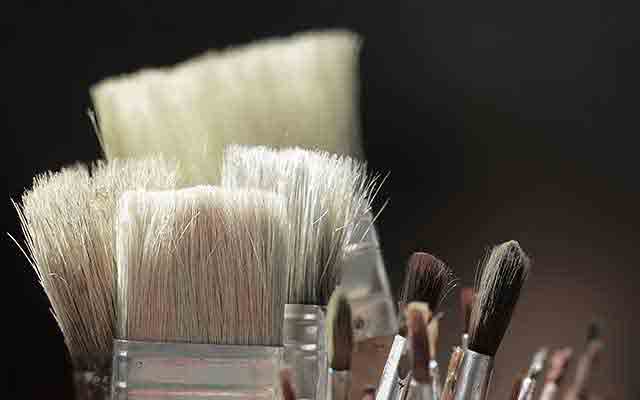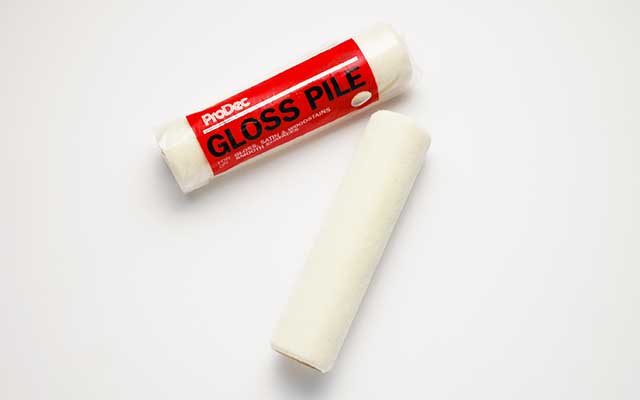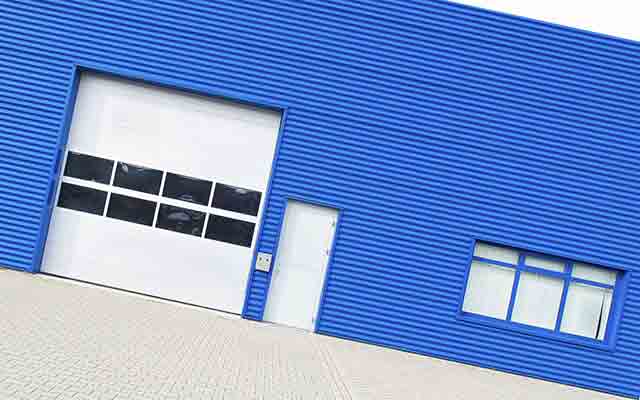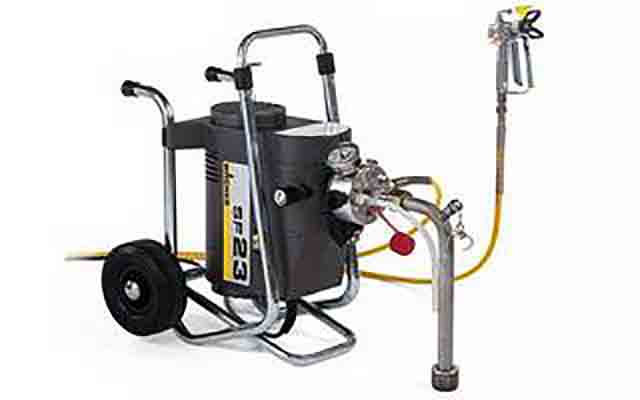If you’ve already taken a tour around the Promain website you will be aware of the easy to view information tabs, available at the click of a mouse.
With Promain’s customer focused attention to detail, we aim to provide easy access to the salient points and information, of particular benefit to Promain customers.
For example, we will always give an indication of the best application method for a particular product of interest. On this note, we thought a blog on the most prevalent methods of application, may prove to be of interest:
Brush
Brush application is often the most suitable and low cost way of applying paints and coatings to a wide range of substrates. It’s ideal for painting intricate objects, awkward corners, striping and cutting in. Undoubtedly, for rough surfaces, application by brush is probably the best method to use.
Promain offer a good selection of accessories, including a range of brushes and we would suggest that the brush is as large as possible, when considering the project at hand.

Also, using the side to side then up and down technique should provide the best results. Painting at a 45 degree angle, avoid using a new brush for the final coat (as bristles tend to shed) and use very light, vertical strokes, with the correct paint, should achieve results that are ‘stand back and smile’ good.
A word of caution though, ensure that your choice of paint or coating is suitable for brush application. Products that contain xylene, for example, are not suitable. Solvents will ‘flash off’ quickly and the coating won’t self-level. Additionally we would recommend that, during the painting process, the brush is cleaned every 30 minutes, which will avoid the possibility of the paint or coating ‘curing’ on the brush.
Roller
Rollers can only be used on flat surfaces but will achieve a faster rate of coverage than brush application. A short pile mohair roller is particularly good when there is a need for speed, although a small diameter felt or closed cell foam roller will provide a better quality finish.
A tip: when using new felt or mohair rollers, wrap masking tape around the roller and loose fibres will be removed by pulling it off. Laying off the paint, with a brush or pad, after applying with a roller, will also give an improved finishing coat.

Conventional Spray
Again, Promain has a good selection of paint sprayers and spray machines available for our customers. It’s widely accepted that, used with the correct product, Spray Application provides the best results. Certainly, when using a product such as Hi Build Vinyl Cladding Coating, by spray application onto Plastisol Cladding is perfect – speed, convenience and a great finish will be achieved – ideal for the larger projects that this coating is designed for.

Conventional sprays mix large quantities of paint with compressed air, which is then propelled through a nozzle. With a subsequent drop in pressure, atomisation takes place and the projected air/paint mixture is directed at the desired target.
This type of paint and coating application affords the ability to compress the spray pattern into a soft edged and refined finish and enables a good degree of operator control.
As the edges of the spray coating have a reduced paint content and a softness to them, overlapping applications from the spray gun are easily blended into the previous spray pattern, providing a uniform and subtle finish, rather than a double film thickness.
Caution must be paid to the ‘paint fog’ that’s a by-product of spray application. When spraying, large volumes of the paint and air mixture bounce off the surface. Satisfactory ventilation must be ensured, not just for the safety of the operator, but also to rectify the issue of ‘over-spraying’.
As solvent is lost into the atmosphere, in the spraying process, it can also lead to a poor flow-out rate and problems with dry film concerns. For these reasons, aeration or extraction in the surrounding vicinity, is essential.
A spray gun nozzle can be opened gradually, permitting a low application rate, if required. It is also possible for the paint or coating to be fed to the gun by pressure, via a separate paint container – otherwise known as a ‘pressure pot’.
Or, in cases where the paint container is attached to a gun, the paint or coating will be fed by a gravity or syphon feed. Adjustments can be made to the nozzle size, air pressure, fluid pressure (if pressure feed is utilised), fan width and air / paint mixture ratio.
Airless Spray

This type of Paint and Coating application is used for high volume work where a fine surface finish is not crucial. For example for applications to bridges and structural steelwork, etc.
The paint is propelled at very high pressure through a very small outlet. With a sharp drop in pressure, as the paint exits the nozzle, the product is atomised into fine droplets. Airless pumps can be powered with a pump, electric or petrol motor or a gas or diesel engine.
The more powerful the pump, the higher the flow rates that can be achieved, enabling an extremely fast and labour saving application method. Airless sprayers operate in such a way that there is little turbulence, meaning the spray mist loses its forward velocity very quickly. This produces the benefit of a significant reduction in surface bounce-back. Additionally, there is less of a loss of solvent which will give the benefit of the application of a ‘wetter’ film.
However, the operator has less control over the application of the film and an overlapping application will result in a double film thickness – adjustments can only be made to the tip size or fluid pressure. This means that this method of application is less suitable for industrial applications where a fine finish is required.
Air-assisted airless
An air-assisted airless spray comprises of a conventional airless gun which has an additional air feed. This will envelop the atomized paint fan with a low-pressure air shroud which softens the fan edge and allows a better finish.
Air-assisted airless application also achieves a higher output than that of the conventional airless gun. It won’t give as fine a finish and is not as controllable as conventional spray but is far superior in the quality of finish to that of a pure airless application. Furthermore, fluid pressure, tip size and air shroud are operator controllable.
You may also be interested in our previous posts:
The Lady Sprays Her Bedroom with Promain Paint
The Pensioner and the Anti-Vandal Paint

